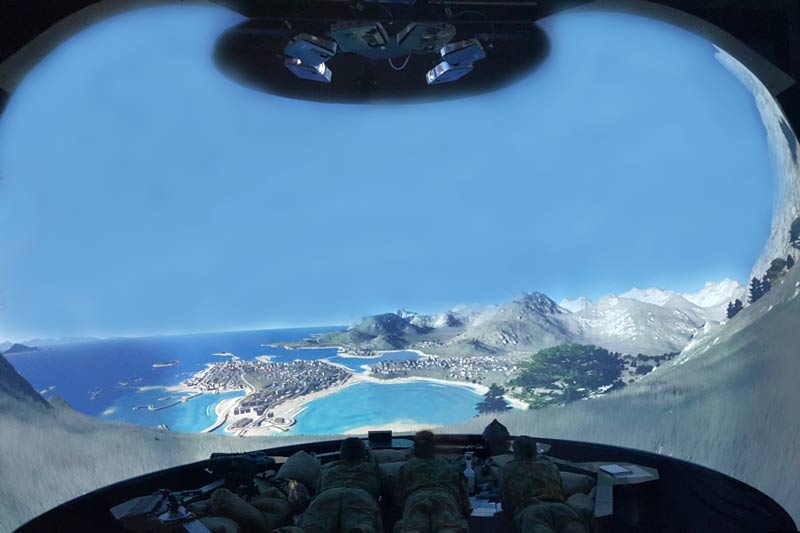
Above image: The DTCS simulator in operation. Credit: Commonwealth of Australia, Department of Defence
The battlefield training of Australia’s soldiers has been given a major boost with eight new Digital Terminal Control System (DTCS) simulators coming online next year.
Minister for Defence Industry, the Hon Christopher Pyne MP, announced a AU$40 million contract with Rockwell Collins Australia to supply the simulators.
Minister Pyne said the contract includes operator and maintenance support and built on the acquisition of three interim systems in March this year, with 80% of the contract value to be spent in Australia.
“This contract will create seven new jobs in Perth, Sydney, Newcastle and Puckapunyal, on top of the four jobs created under the earlier contract,” Minister Pyne said.
“The DTCS itself is a state of the art computer-based capability which uses specialised software and hardware equipment to identify enemy targets with greater speed and accuracy.”
“These simulators will equip our soldiers with the skills necessary to use the DTCS to coordinate battlefield fire from artillery, mortars, helicopters, naval ships and fighter aircraft.”
“It also provides our personnel with the ability to work with multiple Australian and coalition land, air, and sea platforms to engage the enemy.”
“The simulators provide an environment which can be difficult to replicate in live training, they provide a realistic, cost effective and safe alternative.”
“The purchase of these systems demonstrates our commitment to using Australian defence industry to improve and modernise our training equipment.”
The new simulators will be installed at bases in Brisbane, Townsville, Darwin, Perth, Sydney, Williamtown and Puckapunyal.
Delivery of the simulators is planned to commence in May 2018 with the final simulator expected in December 2018.
In April 2017, the Royal Australian Navy announced that it would extend its use of use of simulation in training to ensure future electronic warfare sailors are equipped with the most advanced skills to successfully fight at sea. A contract worth AU$4.4 million has been signed with an Australian company, Cirrus Real Time Processing Systems Pty. Ltd. (Cirrus) for the design and development of a tactical electronic warfare training system to provide tuition, assessment and qualification of electronic warfare practitioners across the full range of Navy ships, from a single facility ashore.
















